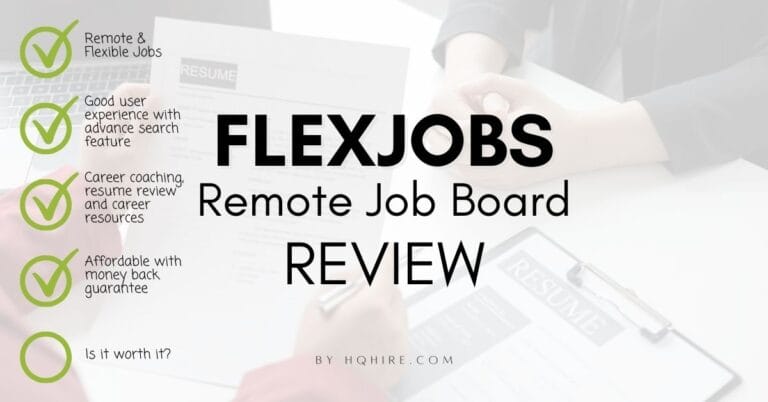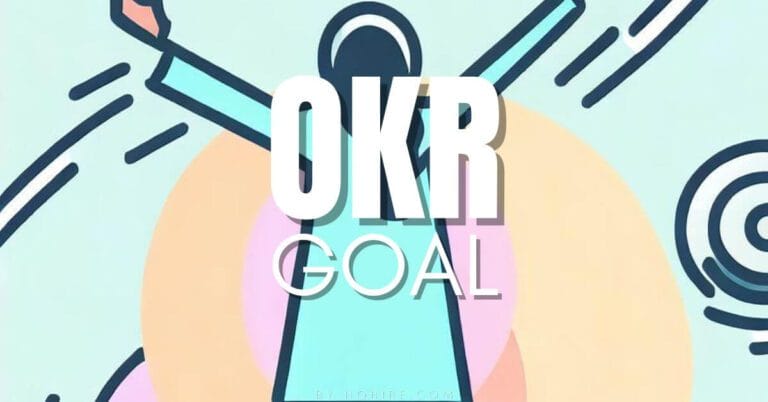Are you ready to steer your career, business, or personal growth towards resounding success? OGSM framework is a strategic planning tool that’s been a game-changer for countless individuals and organizations helping you to set goals that matters.
70% of top management don’t know what is their company’s goals, having a goal setting strategy that can transform your goals into measurable achievements bringing you closer to your true objective.
KEY TAKEAWAY
- OGSM framework focus on the holistic approach to strategic planning of goal setting. And the four steps includes; understand your Objectives, know your Goals, plan your strategy and measure your success.
- OGSM is not just a goal setting technique, but a method of holistic approach to strategic planning that help you achieve your goals and get the best outcome.
- OGSM is all about your true objectives, the “why”, and from there it helps you identify the “what” and the “how” to achieve what you want.
What is The OGSM Framework
OGSM framework is a structured approach to defining what you want to achieve and how you plan to get there.
The acronym OGSM stands for Objective, Goals, Strategies, and Measures.
The goal setting framework is a comprehensive strategic planning model offering clarity and direction that has been used by Fortune 500 companies to turn their visions into actionable strategies.
How To Creating Your OGSM Plan
1. Define the Objective
Start by articulating your over-arching objective. Make it clear, concise, and closely tied to your company’s mission statement.
Your objective is your overarching breakthrough vision, linked to your company’s mission statement. It’s the ‘what’ and ‘why’ of your plan.
Imagine it as the North Star guiding your ship through uncharted waters. Your objective should be stable, concise, and deeply connected to your organization’s core values.
Example Objectives:
- “Become a global leader in simplifying financial services.”
2. Set Measurable Goals
Break down your objective into measurable goals. Each goal should be specific, with a defined timeline.
You can use the SMART Goal methodology to set specific, measurable, achievable, compatible, and time-bound (SMART) goals. These goals act as stepping stones towards your overarching objective.
They provide clarity and direction to your efforts. Think of them as the milestones that mark your progress on the road to success.
Creating these goals requires thoughtful consideration and collaboration. It’s often beneficial to involve key stakeholders to ensure that your goals align with your organization’s strategic vision.
Example goals:
- “Increase market share by 15% in the next fiscal year.”
3. Develop Strategies
Identify specific strategies for each goal. These strategies are your roadmap to success.
Strategies are the ‘how’ of your plan. They define the choices you’ll make to reach your goals.
These strategies should be flexible, adaptable to changes, and aligned with your organization’s mission.
It’s like planning your route for a cross-country road trip, choosing the roads that will get you to your destinations efficiently.
Example on strategy for your particular goal:
- Under the goal of increasing market share, strategies might include “Launch targeted online ad campaigns” or “Collaborate with influencers for brand promotion.”
4. Identify Measures
Determine the key performance indicators (KPIs) that will measure your progress. These should be quantifiable and directly related to your strategies.
This is where Key Performance Indicators (KPIs) come into play.
KPIs are numerical benchmarks that serve as checkpoints to determine if your strategies are working. They provide real-time feedback on your progress, helping you make data-driven decisions.
Your KPI ensure you’re on the right path towards your goal and objectives.
Example of KPIs:
- KPIs for the strategy “Launch targeted online ad campaigns” might include “Click-through rates” and “Conversion rates.”
Benefits and Advantages of the OGSM Framework
The OGSM framework offers several advantages, making it a popular choice for strategic planning:
- Clarity and Focus: OGSM provides a clear, one-page plan that keeps everyone aligned with strategic priorities.
- Alignment of Goals and Actions: It establishes direct links between organizational objectives and day-to-day actions.
- Transparency and Teamwork: A shared understanding of the strategic direction fosters teamwork and employee motivation.
- Measures and Tangible Progress: Emphasizes the importance of measuring success through KPIs, ensuring accountability.
Cons and Disadvantages of the OGSM Framework
While OGSM is a powerful tool, it’s not without its limitations:
- Lack of Flexibility: OGSM is future-focused and may struggle to adapt to rapid market changes.
- Lack of Granularity: Some may find that OGSM’s broad approach doesn’t capture all necessary details.
- Impersonal Top-Down Approach: If not managed correctly, employees may feel excluded from the strategic planning process.
OGSM Framework Template
Here is a OGSM template that individuals and businesses can use to set and track their objectives, goals, strategies, and set measuring requirements.
Objective (O)
- [Clearly define your overarching objective or vision]
- [Make it concise and inspiring]
- [Set a time frame for achieving this objective]
Goals (G)
Goal 1: [Specific, Measurable, Achievable, Relevant, Time-bound goal]
- Strategy 1: [Describe the strategy to achieve Goal 1]
- Measure 1: [Key performance indicator to track progress]
- Measure 2: [Additional indicator if necessary]
- Strategy 2: [Another strategy if needed]
- Measure 1: [KPI for Strategy 2]
- Measure 2: [Additional indicator if necessary]
Goal 2: [Repeat the process for additional goals]
Strategies (S)
- Strategy 1: [Explain how you plan to achieve Goal 1]
- Strategy 2: [Describe the approach for Goal 2]
- Strategy 3: [Include strategies for other goals, if applicable]
Measures (M)
- Measure 1: [Specify how you’ll measure progress for Goal 1]
- Data Source: [Where will you get the data?]
- Measure 2: [Add more measures for other goals]
- Data Source: [Specify the data source for Measure 2]
Action Plan (optional)
- Action 1: [List specific actions or tasks related to your strategies]
- Responsible: [Assign individuals or teams responsible for each action]
- Deadline: [Set a timeline for completing the action]
- Action 2: [Include additional actions as needed]
- Responsible: [Assign responsibilities]
- Deadline: [Set timelines]
With this template here, it provides a structured framework for setting and managing your OGSM goals as well as possible action plans.
You can adapt it to your specific needs and easily track your progress towards achieving your objectives.
Where Did OGSM Originate?
OGSM is believed to to have been devised in Japan in the 1950s before making its way to American corporations.
Procter & Gamble played a significant role in refining and championing the model. Today, it’s adopted by major businesses like Coca-Cola and Mars, as well as consultancy firms.
Best OGSM Framework Examples (Companies That Uses The OGSM Framework)
Three well-known companies that have utilized the OGSM framework to illustrate its practical application are companies like Coca-Cola, Procter & Gamble, and Honda.
These companies use the OGSM framework to set clear objectives, establish measurable goals, devise effective strategies, and track progress through key performance indicators.
This structured approach helps them achieve their long-term visions while remaining adaptable to changing market conditions.
1. Coca-Cola Company
Objective
Become the market leader in the beverage industry by focusing on innovative products, marketing, and stakeholder relationships.
Goals
- Increase revenue by 15% within the next fiscal year.
- Expand market share by 5% in key emerging markets.
- Launch three new innovative beverage products.
Strategies
- Leverage data insights for better advertising targeting.
- Implement a global marketing campaign with a focus on youth engagement.
- Develop partnerships with local distributors in emerging markets.
Measures
- Track quarterly revenue growth.
- Monitor market share in key markets.
- Evaluate the success of new product launches through customer surveys.
2. Procter & Gamble
Objective
Enhance brand recognition and profitability through sustainable innovation.
Goals
- Increase revenue from sustainable products by 20% in the next three years.
- Achieve a 15% reduction in the environmental footprint of manufacturing processes.
- Launch two new sustainable product lines.
Strategies
- Invest in research and development for eco-friendly materials.
- Collaborate with suppliers to improve sustainability in the supply chain.
- Develop targeted marketing campaigns highlighting sustainable products.
Measures
- Monitor the percentage of revenue generated from sustainable products.
- Regularly assess and reduce the environmental impact of manufacturing.
- Track the market share and customer satisfaction of new sustainable product lines.
3. Honda
Objective
Lead the automotive industry in electric vehicle (EV) technology and market share.
Goals
- Increase EV sales by 50% within the next two years.
- Expand the EV charging infrastructure in key markets.
- Develop a next-generation EV model with cutting-edge technology.
Strategies
- Collaborate with energy companies to build a network of fast-charging stations.
- Invest in research for battery technology advancements.
- Launch a marketing campaign highlighting the benefits of EVs.
Measures
- Track quarterly EV sales figures.
- Monitor the expansion of charging stations.
- Evaluate customer feedback and reviews for the new EV model.
OGSM Framework vs. Other Goal-Setting Models
When it comes to goal setting and strategic planning, various models and frameworks have emerged over the years. Each of these tools offers its unique approach to help organizations and individuals achieve their objectives. Let’s dive into how the OGSM framework distinguishes itself from some of the most popular goal-setting models:
1. OGSM vs. OKR (Objectives and Key Results)
OGSM Framework: OGSM, with its focus on Objectives, Goals, Strategies, and Measures, provides a holistic approach to strategic planning. It places an emphasis on the alignment of objectives with actions and measurable outcomes, making it a powerful tool for organizations seeking clarity and accountability.
OKR: OKR, on the other hand, stands for Objectives and Key Results. While it shares similarities with OGSM in terms of objectives and measurement, OKR primarily revolves around setting ambitious objectives and defining measurable key results to track progress. OKR is known for its simplicity and flexibility, often used by tech giants like Google.
| Aspect | OGSM Framework | OKR |
|---|---|---|
| Definition | Focuses on Objectives, Goals, Strategies, and Measures | Focuses on Objectives and Key Results |
| Emphasis | Comprehensive strategic planning | Outcome-driven goal setting |
| Strategies | Clearly defined strategies accompany objectives | Strategies are often implied |
| Flexibility | Flexible in accommodating various strategies | Flexible in adapting to changing priorities |
| Simplicity | Offers a concise, one-page strategic plan | Simplicity in setting objectives and key results |
| Usage | Effective for detailed strategic planning | Popular among tech companies for goal alignment |
Key Difference: OGSM takes a more comprehensive approach by incorporating strategies into the planning process, ensuring that the ‘how’ is as well-defined as the ‘what.’ OKR, while effective, is more focused on the outcomes themselves.
2. OGSM vs. Balanced Scorecard (BSC)
OGSM Framework: OGSM provides a one-page strategic plan that emphasizes the integration of objectives, goals, strategies, and measures. It is particularly useful for organizations seeking a concise and straightforward approach to strategic planning.
Balanced Scorecard: The Balanced Scorecard is a performance measurement framework that looks at an organization’s performance from four key perspectives: financial, customer, internal processes, and learning and growth. It’s a comprehensive tool that goes beyond goal setting to evaluate various aspects of business performance.
| Aspect | OGSM Framework | Balanced Scorecard |
|---|---|---|
| Focus | Goal setting and strategic planning | Performance measurement and business process improvement |
| Structure | Objectives, Goals, Strategies, Measures in one document | Perspectives: Financial, Customer, Internal Processes, Learning & Growth |
| Performance Measurement | Limited focus on performance measurement | Comprehensive performance metrics |
| Complexity | Simple and straightforward | More complex, involving multiple perspectives |
| Applicability | Ideal for setting clear objectives and strategies | Useful for assessing overall organizational health |
Key Difference: While OGSM is primarily a strategic planning tool, the Balanced Scorecard is more focused on performance measurement and improving business processes. OGSM is goal-oriented, while the Balanced Scorecard provides a broader view of an organization’s health.
3. OGSM vs. Hoshin Kanri
OGSM Framework: OGSM offers a streamlined approach to strategic planning, emphasizing the alignment of objectives with clear strategies and measurable outcomes. It is particularly effective for organizations seeking a concise and actionable plan.
Hoshin Kanri: Hoshin Kanri, also known as Policy Deployment, is a Japanese strategic planning method. It emphasizes a top-down approach to align organizational objectives and strategies. It involves a process of setting goals, developing plans, and regularly reviewing progress.
| Aspect | OGSM Framework | Hoshin Kanri |
|---|---|---|
| Origin | Not specific to any particular region | Japanese strategic planning method |
| Approach | Streamlined approach to strategic planning | Top-down alignment of objectives and plans |
| Complexity | Simple and accessible | Can be complex, often used by larger corporations |
| Focus | Objectives, Goals, Strategies, Measures | Alignment, execution, and continuous improvement |
| Adoption | Suitable for a wide range of organizations | Commonly used by Japanese companies |
Key Difference: OGSM is known for its simplicity and ease of use, making it accessible to a wide range of organizations. Hoshin Kanri, while effective, can be more complex and is often associated with larger corporations.
4. OGSM vs. GOST (Goals, Objectives, Strategies, Tactics)
OGSM Framework: OGSM offers a strategic planning model that incorporates Objectives, Goals, Strategies, and Measures into a single, concise document. It emphasizes the alignment of actions with desired outcomes.
GOST: The GOST framework, like OGSM, focuses on setting clear goals and defining strategies to achieve them. It is a systematic approach to goal setting and planning. GOST stands for Goals, Objectives, Strategies, Tactics.
| Aspect | OGSM Framework | GOST |
|---|---|---|
| Terminology | Uses Measures for tracking progress | Uses Tactics for executing strategies |
| Structure | Combines Objectives, Goals, Strategies, Measures | Separates Goals, Objectives, Strategies, Tactics |
| Alignment | Aligns objectives and strategies | Emphasizes alignment of all components |
| Simplicity | One-page strategic plan | May result in more extensive documentation |
| Applicability | Effective for concise planning | Suitable for organizations that prefer detailed plans |
Key Difference: The main distinction lies in terminology and the specific structure of each framework. OGSM uses the term ‘Measures,’ while GOST uses ‘Tactics.’ Both emphasize the importance of aligning strategies with goals, but the naming conventions may differ.
Turning Your OGSM Plan into Reality
The OGSM framework bridges the gap between strategy and execution.
By carefully crafting your objectives, setting SMART goals, defining actionable strategies, and measuring progress with KPIs, you can transform your vision into reality.
Whether you’re aiming to grow your business, advance your career, or achieve personal growth, OGSM can be your guiding light on the path to success.
So, why wait? Start creating your OGSM plan now and unlock your full potential.
Read Also:
- +21 Best Types of Goal Setting Techniques (Succeeding at Work)
- 22+ Goal Setting Statistics You Should Know in 2024 (Facts and Studies)
- Ultimate Guide to Hoshin Kanri (Policy Deployment) Strategic Planning (Step Guide)
- Management By Objectives (MBO) Goal Setting Model (Examples and Templates)
- OKR Framework: Ultimate Guide to Achieving Key Result & Goals (with Templates + Examples)
Join over 11,000+ achievers who are committed to achieving their career goals!






